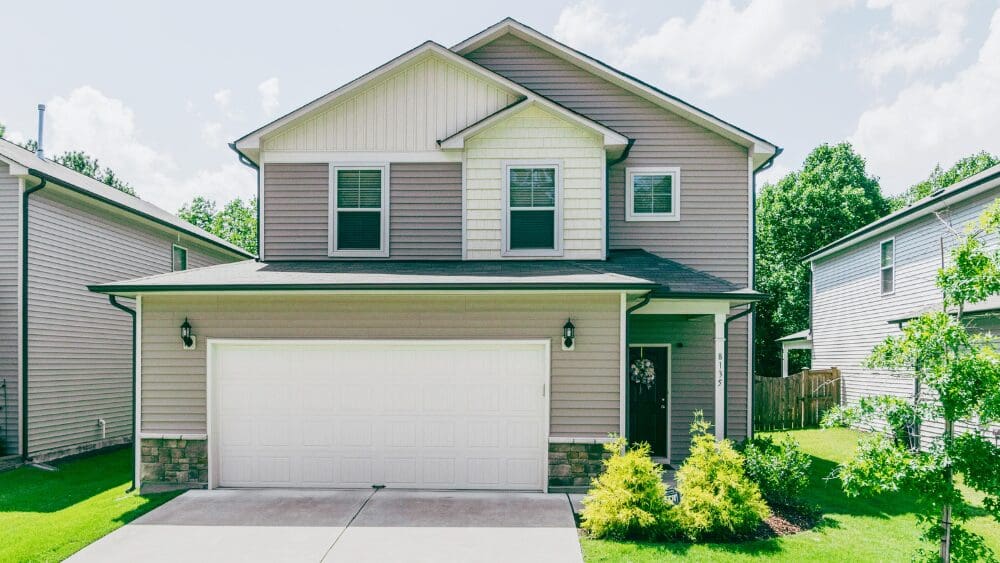
Landing on a fair-market value for your rental can be a big challenge, especially if you haven’t ever rented a house before. You don’t want to leave money on the table, but you also don’t want your rental sitting vacant because you’re charging too much. Here are six ways to calculate how much your home will rent for. Of course you want to get the very most you can out of your rental. However, you should note that rental prices in an area don’t follow the same highs and lows as the regular housing market. According to Cosmo Spellings, a real estate agent with over 15 years of experience in the Florida panhandle area, you can only expect about a 10% fluctuation up or down in rental prices as housing markets shift. If housing prices are up, more people may be opting to rent, and you can increase rent prices in turn. According to Spellings, “A property that would normally rent for $1,000 a month and it’s a super high market — it’s not gonna rent for $1,400, but you could very easily get $1,150.” If the housing market is down, though, there tends to be fewer renters, and you may need to lower your prices to get someone in the door — but thankfully not by too much. “That same $1,000 now becomes $900 but never becomes $500,” says Spellings. The most important thing is that you get renters into your house; if you err on the side of maximizing your rent price and the house sits empty, you won’t make any money at all. This is why it’s important to be fair to renters, whether they’re long-term or short-term. Some experts suggest that landlords set a rent price at 0.8% to 1.1% of the home’s value per month. In the fourth quarter of 2019, the median home price was $324,500, which would make for a rental price between $2,596 and $3,569.50. For homes worth significantly less than the median value, you probably want to price closer to 1.1%. For homes worth more, 0.8% is probably a more realistic rent price. However, the percentage you can get might also be dependent on the current housing market. The basic law of supply and demand comes into play: if housing prices are up and the inventory is low, the demand for rentals also goes up. This method of setting rent is often used by investors. Those who are renting out a house as an investment and may have several rental properties. In fact, they may have purchased the property as an investment in the first place based on the fact that they knew they could expect a certain amount in rent based on the current market. If this is not you, or if a rent amount equal to between 0.8% and 1.1% of your home’s value prices you out of the local rental market, you may want to consider other rent calculation methods. Just like an appraiser values a home by using comps, you can do the same thing with rentals. There are two ways to do this. First, you could find rental homes comparable to yours (size, age, features, location) that are renting and evaluate the current rental income they’re generating. Alternatively, if you are unsure of your home’s current value, you can use comps to determine this, and then use the 1% rule previously mentioned. There are numerous ways to research comps. You could consult a real estate agent who has access to the MLS (multiple listing service). Searching local listings in the paper or online for rentals as well as sales prices is another way to go. You can also use HomeLight’s home value estimator to get an idea of what your home is worth. The key features to look at are number of bedrooms, number of bathrooms, and how recently the home has been renovated. According to Spellings, “Renters are more willing to pay a higher dollar in rent if the property is turnkey: new floors, new countertops, new appliances. It has that brand-new house feel.” If you can’t find any comps that line up with your home’s stats, start with what’s closest and adjust accordingly for any differences between homes such as age, number of bathrooms, and so on. This can be very tricky, but can also be a good way to establish a competitive rate that gets a high-quality renter in the door who wants to stick around. Figure out your monthly mortgage payments, taxes, insurance, and other expenses, including repairs and maintenance. (If you decide to include utilities as well, you can charge more in rent.) Base your rent around what you’ll need to meet your financial obligations. Note that even if you come in low or do no more than break even each month between what you pay for your house and what you make in rent, you still come out ahead because your house is being paid off and is likely to appreciate in value. You will see all of that money back if and when you eventually sell. So even if the market dictates that your rental price must be lower than your expenses, that isn’t necessarily detrimental in the long run. And again, having a renter paying less than what you’d hoped for is always better than having no renter at all. These might not be totally accurate, but they can give you a good jumping-off point for setting rent. Make sure you’re looking at median error rates or other data information so you have an idea of how far off the rent could be. It’s best to use several different calculators so you can get a sense of price range. Look for ones that take into account any factors that you’d like to consider, such as your monthly expenses. But do keep in mind that a calculator can only provide an estimate, and that the estimate may or may not be accurate, especially since it can’t take into account other variables, such as features unique to your rental, or even your personal feelings about what price you’d like to see. Vacation rentals have their own rules for setting rents. You typically want to figure out the busiest and slowest times of year for vacation rentals in your area, then do some research if you can. What are similar rentals going for? What are the fees for cleaning? How about additional guests? Are there security deposits? How does the price break down over the week? Should weekends be more expensive? Note that Airbnb will automatically provide you with an estimate based on the number of rooms, size, amenities, location, time of year, and prices of nearby listings, so you can leave it to the algorithm if you don’t know where to start. You can also use your own financial needs to set a starting point for vacation rental and then experiment with increasing the rent until you reach a point where you’re as booked as you want to be and maximizing your nightly income. The upside is that vacation rentals can bring in a lot more income than regular rentals. However, you will need to keep on top of responding to potential guests and dealing with cleaning between guests and other expenses. And if your rental property is not located someplace tourists are prone to wander through, you may find it difficult to stay booked. Both investors and regular homeowners alike often see great benefits from using a rental company to rent their property. According to Spellings, a rental company can “become a wall between you and the occupants. It takes that emotion out of it.” They deal with problems, late rent, and can even make eviction processes go much more smoothly by having all of the right paperwork in order. According to Spellings, while the rental company will charge a fee for their service (about 10% to 12% of the rental price), it can be worth it in the end because it not only saves you hours of your time and any emotional strain, but they are experienced at keeping your rental priced competitively — and, most importantly, keeping it occupied with carefully vetted renters. Whichever method (or combination thereof) you choose for setting rent, remember that it can always be adjusted up or down as needed to make use of the law of supply and demand and maximize your profits, though it is also your obligation to understand local laws limiting rent raises and other rental regulations. Header Image Source: (Poseidon X / Unsplash)The things to remember when setting rent
Method 1: Set rent using the home’s value
Method 2: Set rent using comps
Method 3: Set rent using your own financial needs
Method 4: Set rent using an online calculator
Method 5: Set rent using Airbnb
Method 6: Leave it to the rental company



